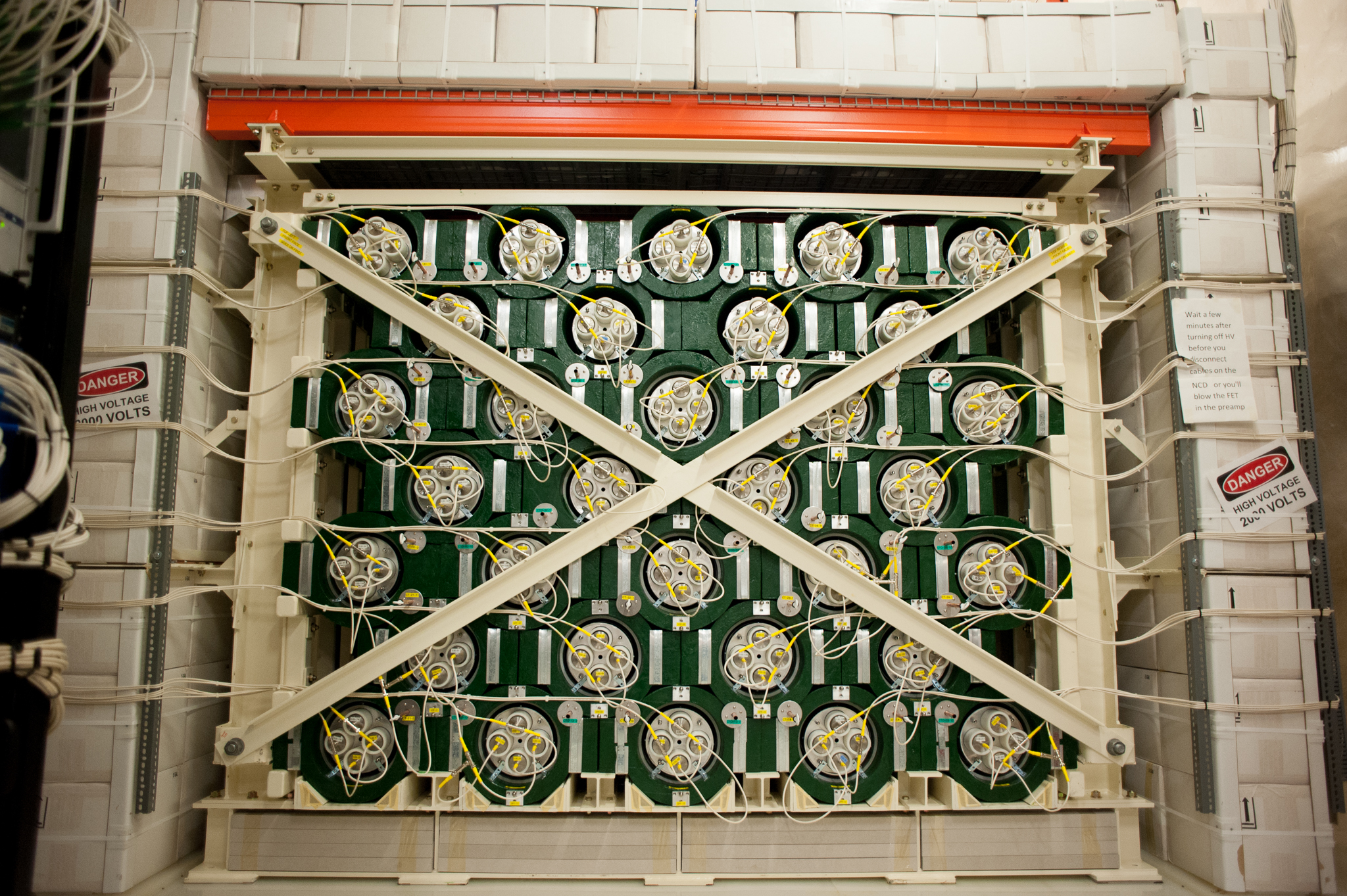
Betelgeuse and HALO: A match made 2km underground
Betelgeuse (pronounced Beetle-juice) has had astronomers sitting on the edge of their seats, waiting for the star to explode as a supernova, for some time. In 2019, it began dimming dramatically and continued until 2021 before starting to shine brighter than ever in 2023. Betelgeuse is a red supergiant star, about 700 times bigger than our Sun, in the Orion constellation, approximately 640 light-years away (6.055x 1015 kilometers, or approximately 63,200 times farther away from Earth than our Sun!). Though the explosion of the star doesn’t present any risk to us on Earth it will still be noticeable in the sky when the star does explode.
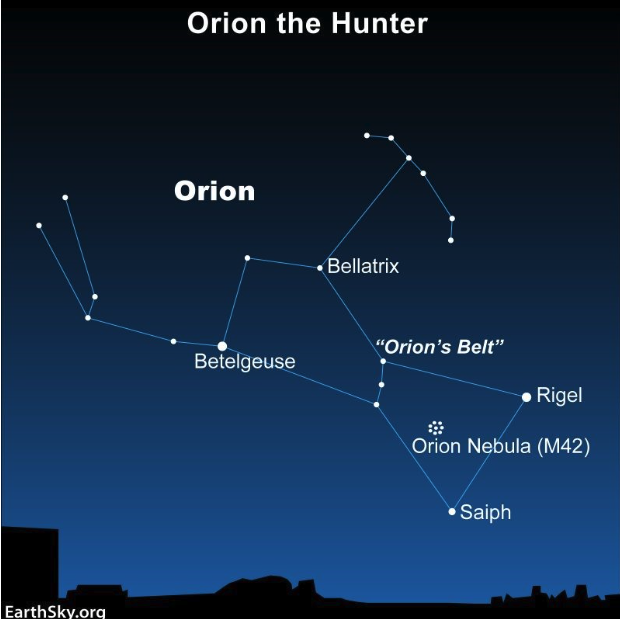
“Modern estimates suggest single-star explosions [in our galaxy] can occur once every 60 years, but there is a big uncertainty on that,” says Dr. Stephen Sekula, Research Group Manager, “There has not been a visible supernova in the Milky Way since 1604, ironically just before the invention of the telescope”.
Just as people have a lifecycle, so do stars. Stars form from a stellar nebula to either become an average star, like our Sun, or a massive star, as Betelgeuse would have been. As a massive star begins to run out of hydrogen at its core, it will become a red supergiant, which is what Betelgeuse currently is. A supergiant will continue to fuse elements in its core, building up an iron core. Eventually, the star runs out of fuel and gravity causes it to collapse inwards. This process leads to a large explosion called a supernova, producing the heavier elements in the periodic table in the process. In fact, supernovae are the only way of making many heavy elements which are essential to human life, such as cobalt, copper, and zinc.
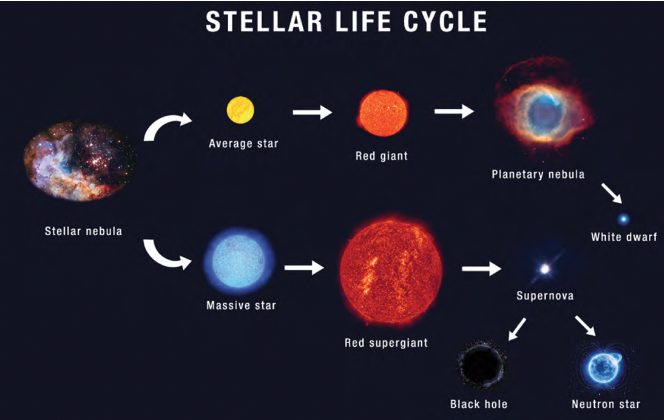
A recent study suggests Betelgeuse has a larger radius than originally thought and from observing fluctuations in its brightness it is predicted to go supernova soon. Though we say it might be “soon”, on the astronomical scale that could still be decades away. The idea of a star exploding might sound concerning, but since it is so far away it won’t have much impact on Earth. The explosion will release a large amount of energy, but since it will be so far away it will mostly dissipate before reaching us. It is estimated there will be some minor ozone depletion from the burst of ultraviolet radiation but that will only be temporary.
The most noticeable effect to us will be the visual spectacle! The supernova explosion could be comparably bright to a half-moon but concentrated to a single point! This will make the supernova visible during the day for approximately a year and at night for several years. Following this, the light from the explosion will vanish and Orion will be missing its shoulder.
“It would be amazing to get images of such an event in process!”, says Research Scientist Dr. Erica Caden, “We can see what the SN1987A looks like now, and we have images of it before going supernova, but none of the process”. SN1987 refers to a recent supernova that took place in 1987 in the Large Magellanic Cloud, a satellite galaxy that orbits our own Milky Way galaxy.
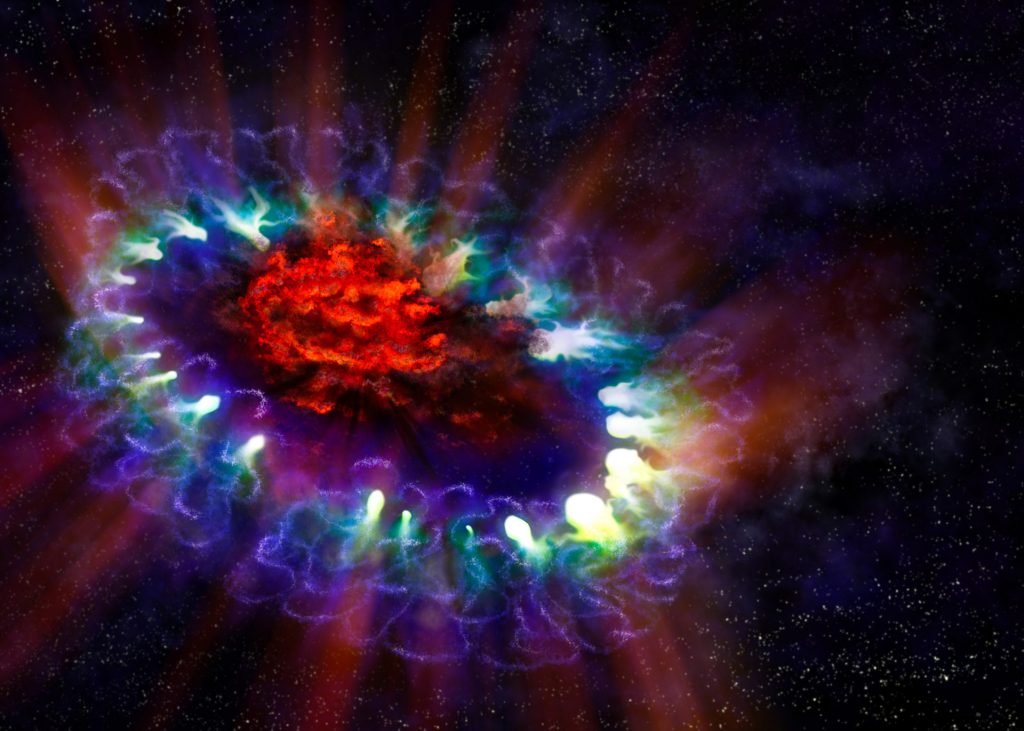
Here at SNOLAB, the HALO experiment is patiently waiting for the next supernova in our galaxy. The experiment will see the burst of neutrinos that will reach Earth before the light from a supernova. Since neutrinos rarely interact with other matter, they can escape the collapsing star before even the light can make it out. This provides neutrino experiments on Earth, such as HALO, the unique opportunity to know when a supernova is taking place before we see it! HALO is part of a global supernova monitoring network. The SuperNova Early Warning System (SNEWS) is a network that connects neutrino experiments around the world to look for this burst and provide an alert to astronomers in the event of a supernova signal. This could provide astronomers with minutes to days of notice before the event, depending on the conditions. This advance warning will give astronomers the incredible opportunity to watch a supernova take place in the early stage when light becomes visible. Not only is this exciting for professional and amateur astronomers as this type of observation will provide rich scientific data and help to advance our understanding of a galactic core collapse supernova.
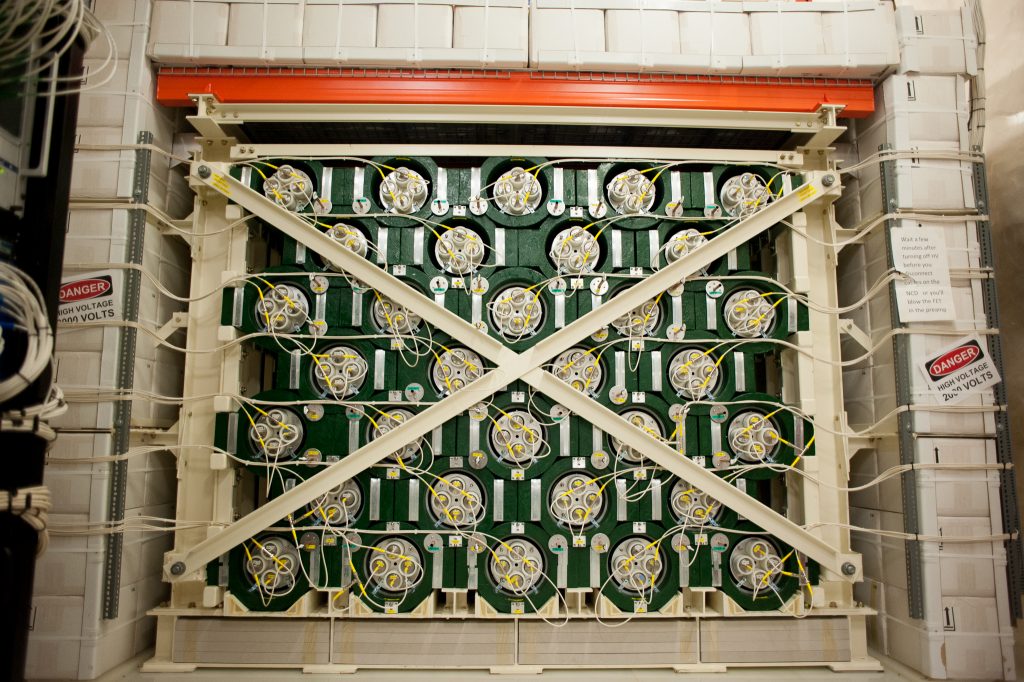
“Betelgeuse is an exciting potential supernova target and it’s gathered a lot of attention recently because it has been so variable,” says Dr. Sekula, “However, we still don’t fully know how to predict when a star might actually be ready to detonate, and experiments like HALO will help give us more pieces of the puzzle.”
Interested in learning more? Check out some of these links!
National Post: Astronomer predicts that a red supergiant star nearby could go supernova very soon
The team at NASA JWST made a list of how Betelgeuse going supernova may affect Earth
Astronomy.com: When Betelgeuse goes supernova, what will it look like from Earth?